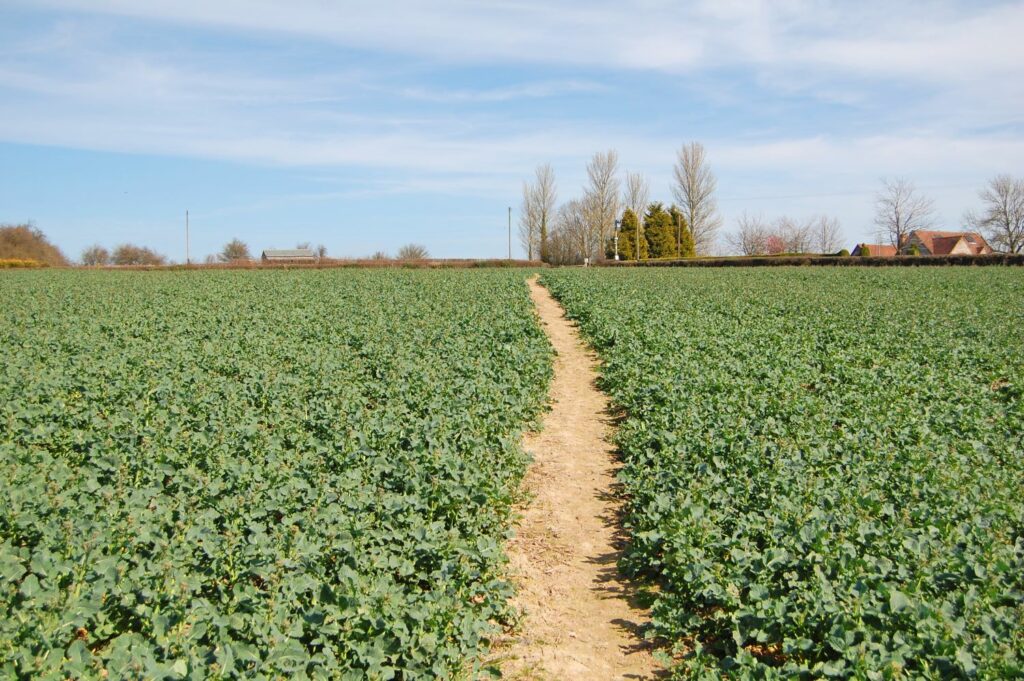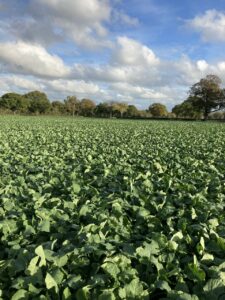New primed OSR variety provides uniform crop size and improved resilience
2nd November 2022
Growers from various parts of the UK have seen good results drilling primed Tennyson this year, reporting early growth vigour, uniform crop size and improved resistance to pests and disease.

Despite being in the industry for 37 years, Agrii agronomist David Vine admitted that growing oilseed rape (OSR) successfully is “still a lottery” for many growers and has even become more difficult over the years.
Those farming OSR must face challenges posed by destructive pests such as slugs, pigeons and cabbage stem flea beetles (CSFBs) as well as unpredictable weather. Further challenges include the ban of most neonicotinoids and escalating blackgrass resistance.
However, recent years have seen the emergence of new methods and technologies to help OSR growers achieve more consistent and predictable yields.
“The advent of priming technology into oilseed rape in the last two years has made a difference,” Mr Vine pointed out. “It’s a proven technology that increases early plant vigour, offers more even crop germination and, given that there are no chemicals involved, it’s a sustainable and environmentally friendly process.”
Working with A & E Beckett, a farming business based near Birmingham, Mr Vine suggested a trial on 21ha of primed Tennyson, the only primed hybrid OSR variety available in the UK.
Along with two unprimed varieties, the farm direct drilled Tennyson OSR on August 12th at a rate of 50 seeds/m2. According to Mr Vine, early results have been extremely promising.

As of late October (10 weeks post-drilling), the A & E Beckett crop of primed Tennyson was a uniform 25cm in height and looked very robust
“We drilled the primed Tennyson in fields that had been left fallow for one year, but despite this unusual scenario, combined with only 30mm of rain in the first 3 weeks post-drilling, the crop came through with great uniformity and continued to grow well despite the combined attention of CSFB and significant pigeon populations.
“By the 3-4 leaf stage the Tennyson still looked healthy with only small shot-holing on the leaves from the CSFB grazing,“ he added.
In contrast, the two unprimed varieties suffered substantial damage from flea beetles on 24th and 25th August, requiring additional help from growth stimulants. Whereas, the primed Tennyson didn’t require spraying as its advanced early growth protected the crop from pest attacks.
“Beyond the priming technology, Tennyson is an impressively resilient variety with a strong disease profile. Its verticillium resistance trait could also be a major positive on farms with tight rotations and I will be following its progress closely,” Mr Vine concluded.
Tennyson crop stands out in uniformity
Oxfordshire-based farm manager Piers Cowling, of Sparsholt Manor Farms, direct drilled 62ha of primed Tennyson at 40 seeds per M2 on Sept 3rd. Earlier this year, Mr Cowling has already achieved 3.45t/ha on a 50ha crop of unprimed Tennyson.
“With no rain in August we were forced to drill later this time, although there was a lot of confidence behind Tennyson, given we knew it had displayed significant early vigour last year,” he explained.
“Of the rape varieties we selected, Tennyson was the last to be drilled but – despite the staggered starts, all 3 varieties emerged together during the week commencing September 11th, with the Tennyson crop the most uniform of the 3.”
Mr Cowling added that all OSR on farm is progressing well thanks to some much-needed October rain, with the crops successfully overcoming some CSFB grazing.
A “no-brainer” variety
Farmer Peter Legge has been growing OSR for 15 years at Legge Farms Limited, located on the Norfolk-Cambridgeshire border. He has been drilling the crop on various soil types, ranging from heavy clay to sharp sands and organic black fen.
Working with Agrii agronomist Simon Hobbs, Mr Legge direct drilled 50ha of primed Tennyson on August 25th-26th, slightly later than planned due to the prolonged dry weather.
““The first month is always critical, and you have to give the young rape crop every advantage available during the first 4-5 weeks of its existence to try to ensure good germination and rapid growth away from pest activity,” he said.
“We’ve been working closely with Simon Hobbs for over 15 years now and, having seen Agrii’s trial results on primed OSR seed, it was a no-brainer to trial a primed variety.”
According to Mr Legge, early signs of growth were positive with the crop showing very even emergence 6 days post-drilling.
“During the second week of September, we did see some CSFB grazing activity, but we were quick to react, adding an insecticide to our post-emergence herbicide tank mix that kept the crop on course, with only low-level shot-holing noted in most of the young OSR plants,” he explained.
“I think we were more confident this time with primed Tennyson, evidenced by our decisiveness with the herbicide spray.
“As of late October, 9 weeks post drilling, the Tennyson crop was at the 10-12 leaf stage with a healthy, dense canopy that tends to stop pigeons from settling in the crop as an additional positive,” Mr Legge concluded.
